With the acceleration of urbanization and the continuous growth of population, the amount of waste generated is becoming increasingly huge. waste disposal has become an important issue that needs to be solved in urban management, and waste screening, as a key link in the pre-treatment of waste disposal, has become increasingly important. waste screening refers to the separation of mixed waste according to different physical and chemical properties through various technical means, so as to achieve the classification and resource utilization of waste. Below, we will explore in depth the basic procedures and important roles of waste screening.
Basic procedures for waste screening
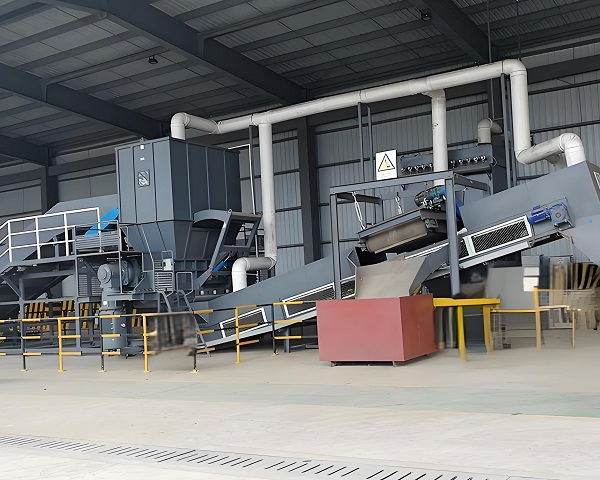
Waste screening equipment
1. waste collection and transportation
The first link of waste screening is the collection and transportation of waste. In every corner of the city, there are different types of waste bins, waste collection stations and other facilities. Residents and units will put the generated waste into the corresponding collection containers according to the preliminary classification (such as recyclables, kitchen waste, hazardous waste, other waste, etc.). The sanitation department uses special waste collection vehicles to transport the waste from each collection point to the waste transfer station or waste treatment plant according to the established route and time schedule. During the collection and transportation process, attention should be paid to prevent the leakage, scattering and secondary pollution of waste, and ensure that the waste can reach the screening and treatment site safely and completely.
2. Pretreatment stage
Crushing: The waste arriving at the waste treatment plant often contains some large items, such as old furniture, large pieces of plastic, etc. These large pieces of waste are not conducive to subsequent screening operations, so they need to be crushed first. The crushing equipment breaks large pieces of waste into smaller particles through strong mechanical force. Common crushing equipment includes jaw crushers, hammer crushers, etc. The size of the crushed waste particles is more uniform, which is convenient for subsequent effective separation using screening equipment.
Magnetic separation: Mixed waste usually contains some ferromagnetic materials, such as nails, cans, etc. Magnetic separation is the process of separating ferromagnetic materials from waste using magnetic force. Magnetic separation equipment is installed on the waste conveyor belt. When the waste passes by, the ferromagnetic material will be adsorbed on the magnetic separation equipment by strong magnetic force, and then separated by mechanical devices. Magnetic separation can not only recover a large amount of metal resources, but also prevent ferromagnetic materials from damaging subsequent screening equipment.
Wind separation: Wind separation is a method of separating waste using wind power based on the differences in density and aerodynamic properties of different components in waste. In the air separation equipment, the waste is sent into an air flow channel. Materials with low density and light weight (such as paper, plastic film, etc.) will be blown to a farther position under the action of the air flow, while materials with high density and heavy weight (such as bricks, metal blocks, etc.) will fall quickly under the action of gravity. By reasonably controlling the speed and direction of the air flow, effective separation of waste of different densities can be achieved.
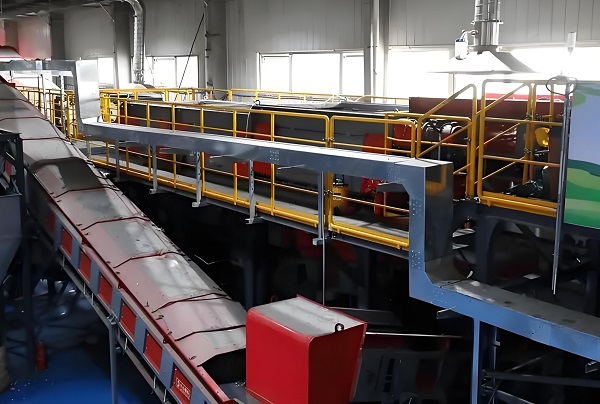
Waste screening equipment
3. Fine screening stage
Vibration screening: Vibration screening uses the vibration of the screen to make the waste jump, slide, etc. on the screen surface. waste particles smaller than the size of the screen hole fall through the screen hole, and particles larger than the size of the screen hole remain on the screen surface, thereby achieving separation by particle size. The vibrating screen has the characteristics of simple structure and high screening efficiency. According to different vibration modes, it can be divided into circular vibrating screen, linear vibrating screen, etc. In waste screening, vibrating screens are often used to separate granular waste of different particle sizes, such as bones, fruit cores and fine food residues in kitchen waste.
Drum screening: The drum screen is a cylindrical drum with sieve holes, and the drum rotates slowly under the drive of the motor. After the waste enters the drum, it keeps in contact with the screen surface as the drum rotates. The waste particles smaller than the size of the screen hole fall from the screen hole under the action of gravity and the rotation of the drum, while the particles larger than the size of the screen hole continue to move forward in the drum and are finally discharged from the other end of the drum. The drum screen is suitable for processing granular and blocky waste, and has the advantages of stable screening efficiency and not easy to clog the screen hole.
Optical screening: Optical screening is an advanced screening technology that uses photoelectric sensors and image recognition technology to identify and analyze the color, shape, material and other characteristics of waste. When the waste passes through the detection area of the optical screening equipment, the sensor quickly captures the image information of the waste and compares it with the pre-set database to determine the type of waste. Then, different types of waste are accurately separated through devices such as high-pressure air nozzles or robotic arms. Optical screening technology can achieve accurate classification of waste, especially for fine separation of materials such as plastics and glass.
4. Post-processing stage
After fine screening, various types of waste need to be further post-processed. Recyclables, such as waste paper, plastics, and metals, will be sent to the corresponding recycling and processing enterprises for recycling and processing; kitchen waste can be converted into organic fertilizer or biogas through biological fermentation, anaerobic digestion, etc.; hazardous waste needs to be specially treated harmlessly, such as chemical stabilization, safe landfill, etc., to prevent harmful substances from causing harm to the environment and human health; other waste is usually disposed of by incineration power generation or sanitary landfill.
The important role of waste screening
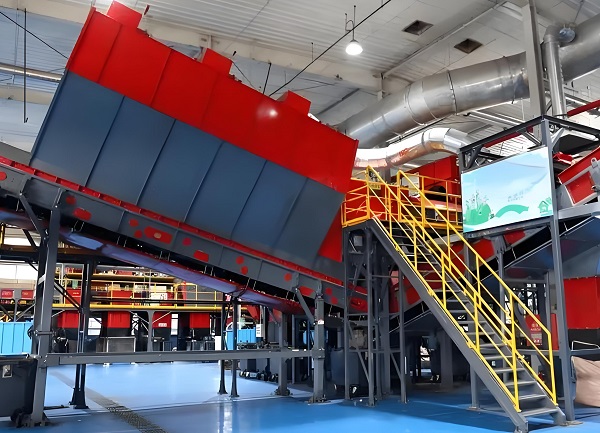
Waste screening equipment
1. Realize the reduction of waste processing
Through waste screening, recyclables are separated from mixed waste, which greatly reduces the total amount of waste entering the final disposal link. For example, recyclables such as waste paper, plastics, and metals can be made into new products after recycling and processing, avoiding these materials from being directly landfilled or incinerated, thereby reducing the volume and weight of waste. According to statistics, reasonable waste screening and recycling can reduce the total amount of waste by 30% - 50%, effectively alleviating the processing pressure of landfills and incineration plants, and extending their service life.
2. Improve the efficiency and quality of waste disposal
After screening the waste, different types of waste can be treated in a targeted manner. For example, after the kitchen waste is screened to remove impurities, it is more conducive to biological treatment, which improves the efficiency of biological fermentation and the output quality of fertilizer and gas; after the recyclables are classified, they can be efficiently recycled according to the characteristics of different materials, which improves the recycling rate of resources. In addition, screening can also remove harmful substances and impurities in the waste, reduce the wear and corrosion of subsequent processing equipment, and improve the operating stability and reliability of the entire waste treatment system.
3. Promote the recycling of resources
waste screening is a key step in realizing waste resource utilization. Through screening, a large amount of recyclable resources can be re-entered into the production field. After recycling, waste paper can be made into new paper; after plastic recycling, it can be produced into new plastic products or chemical raw materials through melting regeneration, cracking and other technologies; metal recycling can save a lot of mineral resources and energy. It is estimated that for every ton of waste paper recycled, 800 kg of good paper can be recycled, saving 3 cubic meters of wood; for every ton of waste plastic recycled, 600 kg of unleaded gasoline and diesel can be recycled. waste screening promotes the recycling of resources, reduces dependence on natural resources, and is in line with the concept of sustainable development.
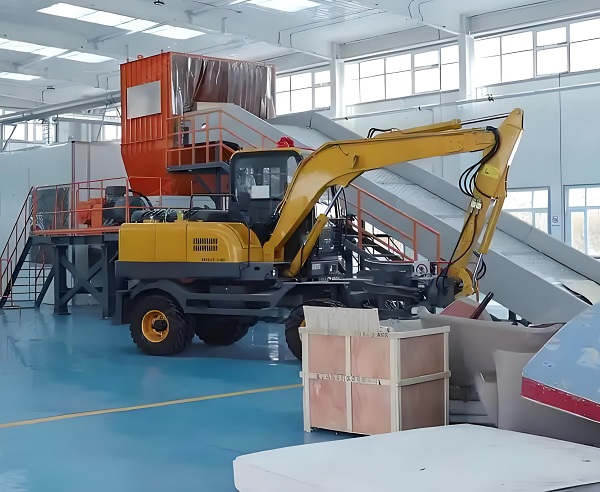
Waste screening equipment
4. Reduce the risk of environmental pollution
Hazardous waste contains a large amount of heavy metals (such as mercury, cadmium, lead, etc.), toxic and harmful substances (such as electrolytes in waste batteries, mercury vapor in waste fluorescent tubes, etc.). If it is directly mixed with other waste for treatment without screening, it will cause serious pollution to the soil, water sources and air. Through waste screening, the hazardous waste can be separated separately and treated in a special harmless way, which can effectively prevent these harmful substances from entering the environment and protect the ecological environment and human health. At the same time, reducing the total amount of landfill and incineration also reduces the emission of pollutants such as leachate and dioxins generated during waste treatment, further reducing the pressure on the environment.
5. Promote the development of environmental protection industry
The development of waste screening industry has led to the rise of a series of related industries, such as waste screening equipment manufacturing, recyclable recycling processing, environmental protection technology research and development, etc. With the continuous advancement of waste screening technology and the growth of market demand, environmental protection enterprises have increased their investment in the field of waste screening, promoting the innovation of related technologies and the upgrading of equipment. This not only creates a large number of employment opportunities, but also promotes the scale and professional development of the environmental protection industry, injecting new impetus into economic growth.
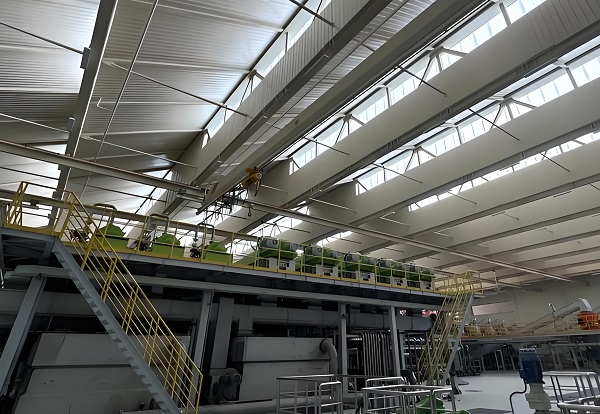
Waste screening equipment
As an important part of waste treatment, waste screening plays a vital role in achieving waste reduction, improving treatment efficiency and quality, promoting resource recycling, reducing environmental pollution risks, and promoting the development of environmental protection industry through scientific and reasonable basic procedures. With the continuous improvement of environmental awareness and the continuous advancement of technology, waste screening technology will continue to improve and innovate, and make greater contributions to the harmless and resource-based treatment of waste and the construction of a beautiful and livable ecological environment.